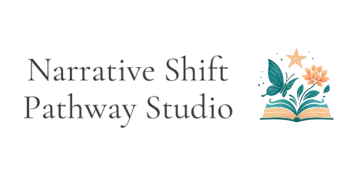Publishing: Self or Traditional

Publishing is the journey of transforming your manuscript from a document on your computer into a book in readers' hands.
Traditional publishing, led by giants like Penguin Random House and HarperCollins, offers professional backing and wide distribution but requires literary agents, long submission processes, and limited creative control.
Self-publishing, on the other hand, puts you in charge. You control the timeline, creative decisions, and marketing while keeping full ownership of your work. With digital platforms and print-on-demand services, reaching readers independently has never been easier.
Both paths have pros and cons—let’s explore them so you can choose the best route for your book.
Why Self-Publish?
(Indie Publishing)
Self-publishing puts you in the driver's seat. There's no need to navigate through agents, editors, or traditional publishing houses—it's all on you from start to finish. While some might find this daunting, others thrive on the excitement. For me, it's a real dopamine rush.
Self Publishing PROS:
Complete Creative Freedom
With self-publishing, you're not constrained by the directives of a publishing house or an agent. You have the final say on everything—from the content of your book to the design of the cover, to the approach you take in marketing. Indie publishing liberates you from traditional notions of marketability, allowing you to explore your passions and cater to your niche audience exactly as you see fit.
Complete Business Control
As with creative control, you also manage the business aspects of your publishing venture. This means you can organize events, set promotional prices, or create book bundles as you see fit, all without needing approval from a traditional publisher.
Easier Access to Publishing
Breaking into traditional publishing can be tough. Often, a book proposal or manuscript is turned down not because of its quality, but because it doesn't align with a specific editorial agenda or the author's profile doesn't fit predefined expectations. Indie publishing removes these hurdles. Your book can reach an audience and succeed on its own merits, free from the arbitrary decisions of others.
Consider font size, line spacing, and margins to ensure readability, especially on smaller screens. Fonts that are too small or too large can make reading uncomfortable and detract from the experience.
Elaborate fonts work well for headers and chapter titles but are not ideal for body text.
Self Publishing CONS:
Reduced Prestige
Self-publishing often faces skepticism as it's accessible to anyone, which means there's no enforced quality control. This lack of gatekeeping has led some to associate self-publishing with low-quality works, like the notoriously bad erotica novels hidden on Amazon. Of course, this stereotype isn't entirely fair—traditional publishing has its share of duds, and many independent books are exceptional. Nevertheless, overcoming this stigma can be a challenge.
Increased Responsibility
As an indie author, you take on the roles typically handled by a publishing house. You're in charge of hiring editors and designers, managing your budget, and tracking sales. Handling the business side of publishing might seem overwhelming, but it also offers the gratifying experience of watching your enterprise succeed through your efforts.
If you relish the idea of controlling your own destiny and reaping the rewards of your hard work, indie publishing could be a perfect fit. However, if making all creative and business decisions sounds daunting, you might prefer traditional publishing.
Our editing team will handle the layout of your manuscript to ensure it looks consistent and professional in the printed book, so there's no need for you to format it precisely as it should appear in the final publication.
Why Publish Traditionally?
If handling every aspect of publishing isn't your cup of tea, partnering with a traditional publisher is a viable alternative. Opting for a third-party publisher can lend more prestige to your work, though it doesn't necessarily mean less effort on your part.
Potential Traditional Publishing PROS:
Recognition and Prestige
Achieving a book deal with a traditional publisher often carries a certain prestige, countering some of the stigma associated with self-publishing. However, the publishing industry is not without its flaws, including nepotism and bias. Success in this sphere often depends less on literary merit and more on marketability and personal connections. While securing a traditional book deal can be viewed as a significant achievement, it's important to recognize the complex dynamics at play.
Streamlined Processes
On paper, traditional publishing seems easier because it handles many of the logistical aspects like editing, cover design, and formatting. This can relieve authors of these technical burdens, allowing them to focus more on writing.
Getting traditionally published isn't straightforward. It involves querying agents, enduring the cycle of rejection and revision, and navigating a system that prioritizes commercial potential over creative content. Additionally, despite the support of a traditional publisher, authors are often still responsible for a substantial portion of their own marketing. This means building and maintaining a readership largely falls on the author, as publishers typically reserve substantial marketing efforts for their established, bestselling authors.
Potential Traditional Publishing CONS:
No Control
Even though you’re responsible for marketing your book, you don’t have all of the freedom to do it as you’d like. For example, you don’t have the freedom to run a promotional price period because you don’t control the price of your book. You also have less control over the content of your books. If you don’t make the changes they want to see, they can shelve your book and never publish it, and if you’ve already sold it to them, you can’t publish it either.
Slower Publishing Journey
Books can take around two years from selling the manuscript to a publishing house to being available in stores. Sometimes a book can be shelved for an indefinite amount of time, sometimes it will never be published at all. Whereas with self-publishing, you’re in control of that timeline.
Getting traditionally published isn't straightforward. It involves querying agents, enduring the cycle of rejection and revision, and navigating a system that prioritizes commercial potential over creative content. Additionally, despite the support of a traditional publisher, authors are often still responsible for a substantial portion of their own marketing. This means building and maintaining a readership largely falls on the author, as publishers typically reserve substantial marketing efforts for their established, bestselling authors.
More Benefits of Self-Publishing
In self-publishing, you're responsible for the initial investment in editing, designing, marketing, and more—although it's possible to self-publish with minimal upfront costs.
You can earn approximately 60-70% of the royalties for most book formats, which can vary by store and country.
You retain full rights to your work. This includes managing all associated rights, such as securing copyrights for any artwork used.
You have the final say in all decisions, from the cover design to the marketing strategy.
The publication timeline is in your hands; your book can hit the shelves within months, depending entirely on your schedule.
Self-publishing places you firmly in control. As an indie author, you shoulder more responsibilities, but this autonomy also comes with significant financial benefits. Once your book starts selling, you'll enjoy a higher percentage of the royalties. Maximizing your take-home earnings is a major draw for those who embrace the role of authorpreneur in the self-publishing business.
Want to work with us?
FOLLOW US
Copyright 2025. Changing the Narrative. All Rights Reserved.

Facebook
Instagram
Mail